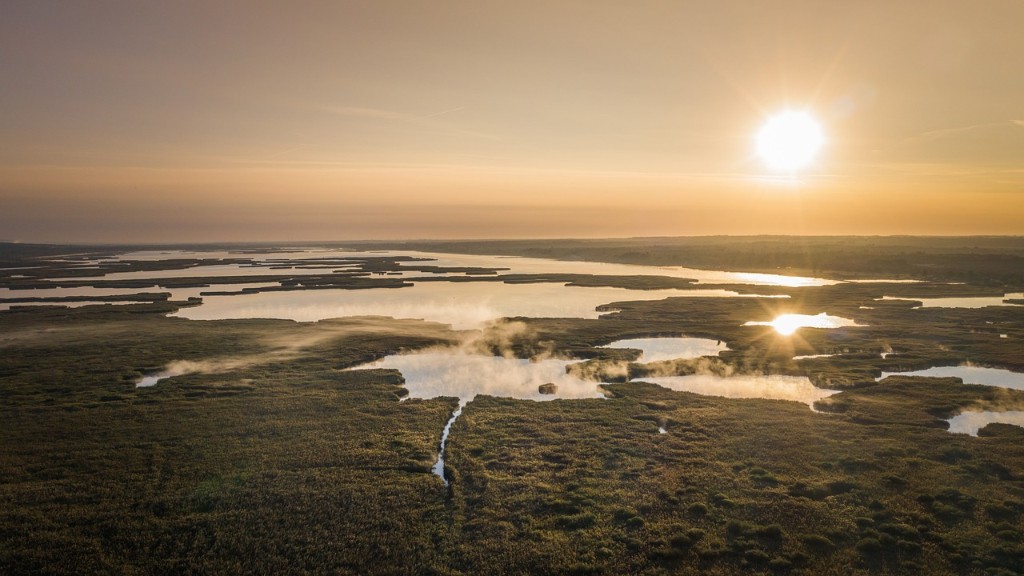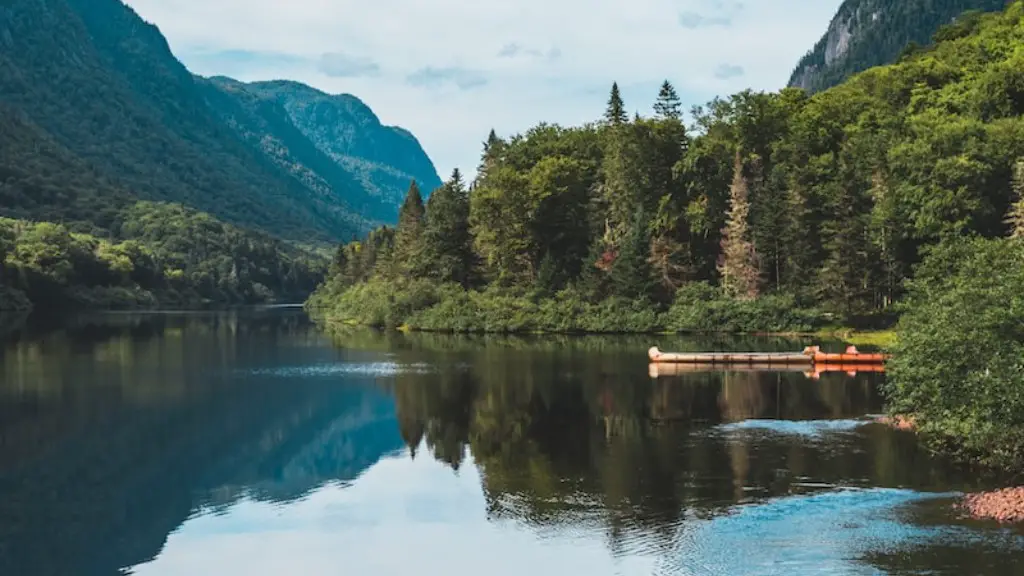What Are The Biggest Fish In Lake Superior?
Lake Superior is the second largest freshwater lake in the world, and is home to a variety of species of fish including some of the biggest and most impressive freshwater fish specimens. The most commonly found fish in Lake Superior includes Chinook Salmon, Walleyes, Lake Trout, Rainbow Trout, Lake Whitefish, and Northern Pike. But which fish is the biggest?
Surprising to many, the biggest fish in Lake Superior is not the Lake Trout, but rather the Northern Pike. The Northern Pike looks quite different from the Lake Trout and is easily recognizable because of its long, slender body and its sharp teeth. The Northern Pike can grow up to 46 inches in length, with some specimens reaching up to 50 inches in length. Lake Trout, on the other hand, can grow up to 42 inches in length.
In terms of weight however, the Lake Trout is the biggest fish in Lake Superior. While the Northern Pike can reach 46 inches in length and weigh up to 28 pounds, the Lake Trout can reach 42 inches in length and weigh up to 40 pounds. This makes the Lake Trout the biggest species of fish in the lake by a wide margin in terms of weight.
In terms of overall size and weight, the Northern Pike is the biggest fish in Lake Superior. While the Lake Trout is larger in terms of weight, the Northern Pike is larger in terms of overall length. Both of these fish are considered to be very desirable game fish and they can both put up quite a fight when hooked.
The best way to catch either of these fish is to use a variety of techniques including trolling, jigging, and casting. The most effective bait for catching Lake Trout is a jigging spoon, while the most effective bait for catching Northern Pike is an artificial minnow or topwater lure. Fishing for either of these species of fish can be an extremely exciting and rewarding experience.
Habitat And Prey of The Biggest Fish In Lake Superior
In order to understand why the Northern Pike and Lake Trout are the biggest fish in Lake Superior, it is important to understand their habitats and the type of prey that they feed on. The Northern Pike lives primarily in shallow weedy bays and rocky shorelines, while the Lake Trout prefers more open waters and deeper parts of the lake. The Northern Pike feeds primarily on smaller fish such as minnows and crayfish, while the Lake Trout feeds on baitfish and smaller fish.
Both fish use their size and sharp teeth to their advantage when hunting for prey. The Northern Pike is an ambush predator, meaning that it lies in wait for its prey before attacking, while the Lake Trout is a pursuit predator, meaning that it actively hunts for its prey. Both are voracious predators and both can be found throughout Lake Superior.
In terms of spawning and habitat preferences, the Northern Pike prefers shallow weedy bays and rocky shorelines, while the Lake Trout prefers deep, cold waters. The Northern Pike spawns in late May and early June, while the Lake Trout spawns in late April and early May. This can be a very important factor to consider when fishing for either of these species.
Both the Northern Pike and the Lake Trout can reach impressive sizes with good angler care and skill. Knowing more about these fish and their habitats can help you to be more successful in targeting them.
Native Species of Lake Superior
Lake Superior is also home to a number of native species such as the Lake Whitefish, the Walleye, and the Brook Trout. The Lake Whitefish is the most important species in terms of commercial fishing, with the other species playing supporting roles. The Lake Whitefish can reach up to 26 inches in length and 7 pounds in weight, making it one of the smaller species of fish in the lake.
The Walleye is an iconic species of fish and is the most sought after game fish in the lake. It can reach up to 28 inches in length and 10 pounds in weight. It feeds primarily on smaller fish, crayfish, and insect larvae. The Brook Trout is another popular species and is prized for its excellent table fare. It can reach up to 18 inches in length and 3 pounds in weight.
These native species of Lake Superior are all smaller than the bigger species such as the Northern Pike and the Lake Trout, but can still provide a great angling experience. Knowing more about the native species of the lake can help you to become a more successful angler.
Pressures on The Biggest Fish In Lake Superior
Unfortunately, there are a number of pressures on the biggest fish in Lake Superior such as overfishing, pollution, and habitat destruction. Overfishing is a major problem as many of the larger species of fish in the lake are being caught for commercial purposes. Pollution is also a major cause for concern, particularly in the tributaries leading into the lake.
Habitat destruction is also a major issue as many of the spawning grounds and other areas important for the fish have been lost or degraded. In addition, the introduction of invasive species such as the round goby and spiny water flea has had a major impact on the native fish populations.
It is important for anglers to practice catch-and-release and to be aware of their impact on the ecosystem. In addition, it is important to be aware of any regulations or restrictions that may be in place with regards to size limits and other restrictions. This will help to ensure the future of these fish populations in Lake Superior.
Conservation Efforts
Fortunately, there are a variety of conservation efforts in place to help protect the biggest fish in Lake Superior. These include habitat protection, stocking programs, and regulations on sizes and limits. In addition, there are a variety of educational initiatives in place to help inform anglers and the public about the importance of preserving these species.
The Michigan Department of Natural Resources along with organizations such as Trout Unlimited and the Lake Superior Fisheries have been actively working to protect and preserve these species in Lake Superior. They are working to protect spawning grounds, improve water quality, and reduce the impact of invasive species.
These efforts are having a positive effect on the ecosystem and ensuring the future of these species in the lake. It is important for anglers to be aware of the conservation efforts in place and to be mindful of their actions when fishing.
Conclusion
The biggest fish in Lake Superior are the Northern Pike and the Lake Trout. While the Northern Pike is larger in terms of length, the Lake Trout is larger in terms of weight. Both of these species can put up a fight and provide a challenging and rewarding experience for anglers. It is important to be aware of their habitats and the type of prey that they feed on in order to be successful in targeting them.
It is also important to be mindful of conservation measures that are in place and to practice catch-and-release. Doing so will help to ensure a thriving and healthy population of these species in Lake Superior for years to come.





